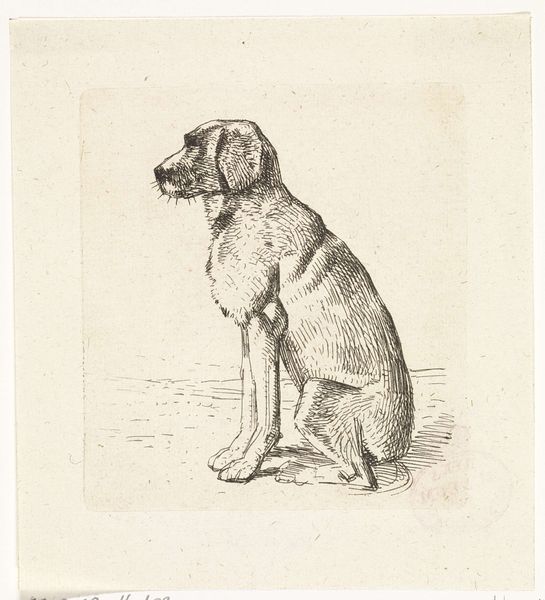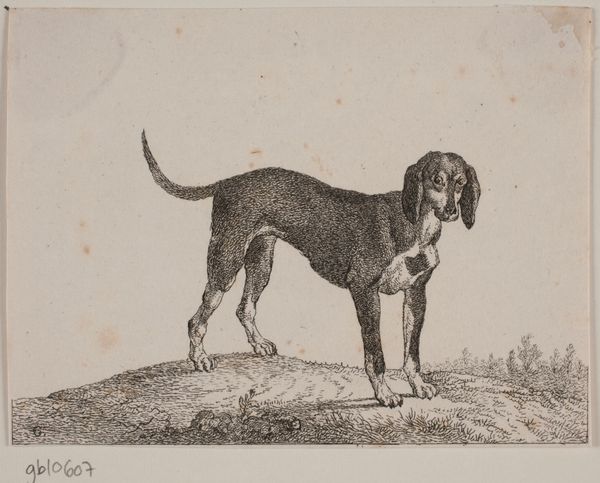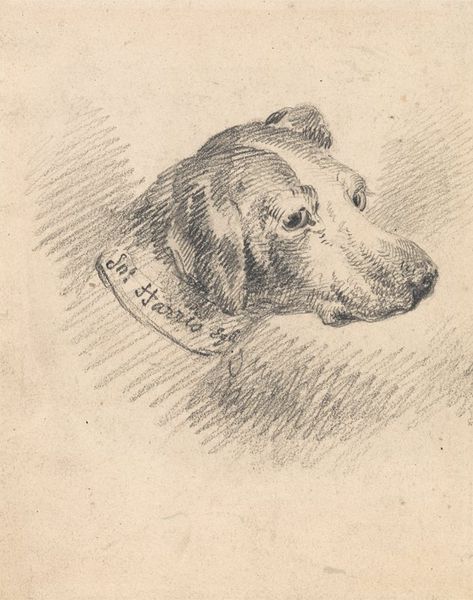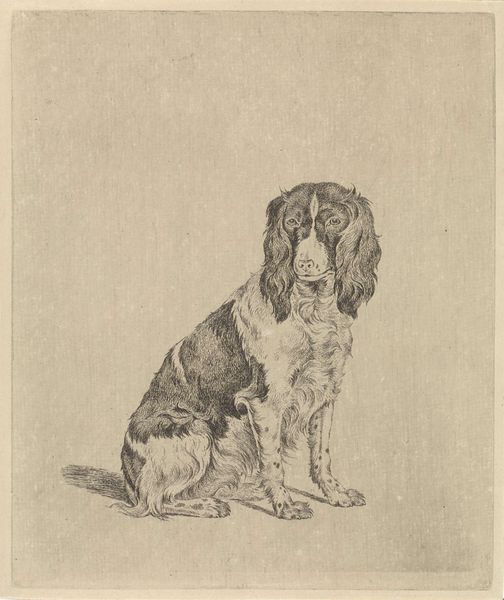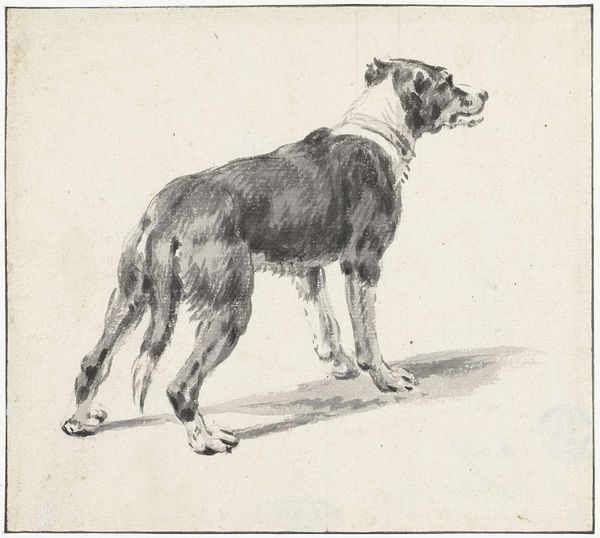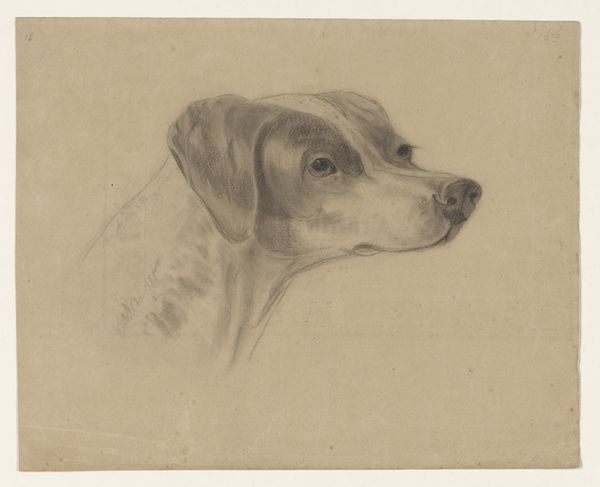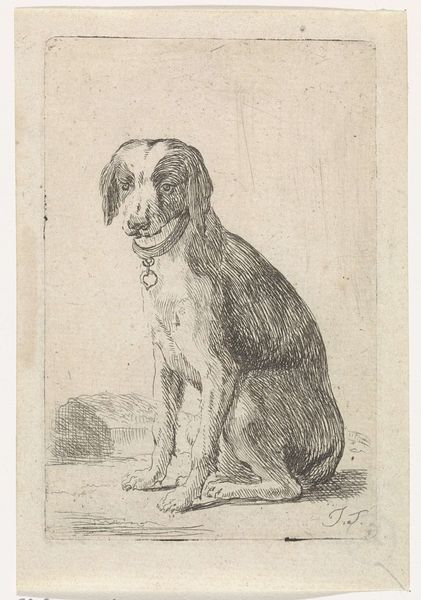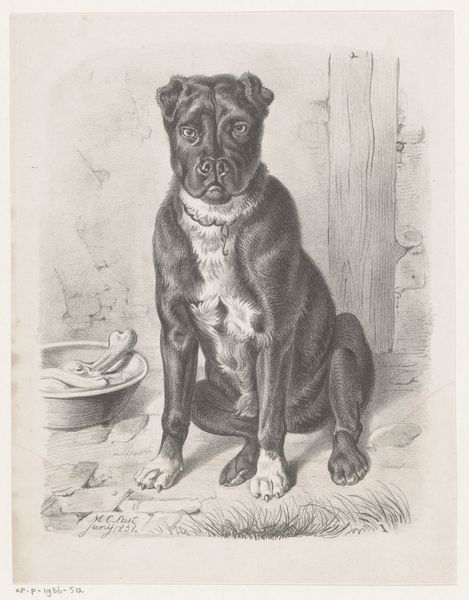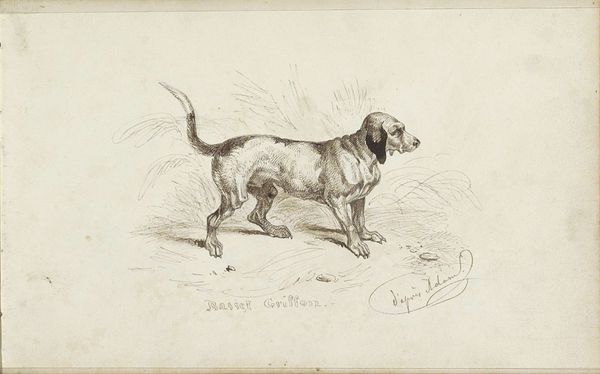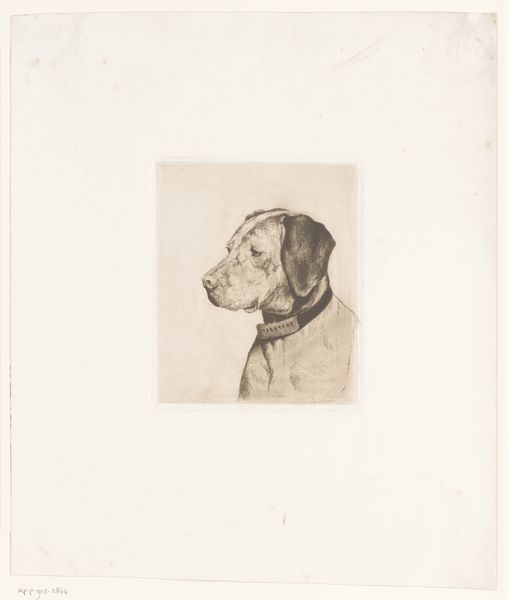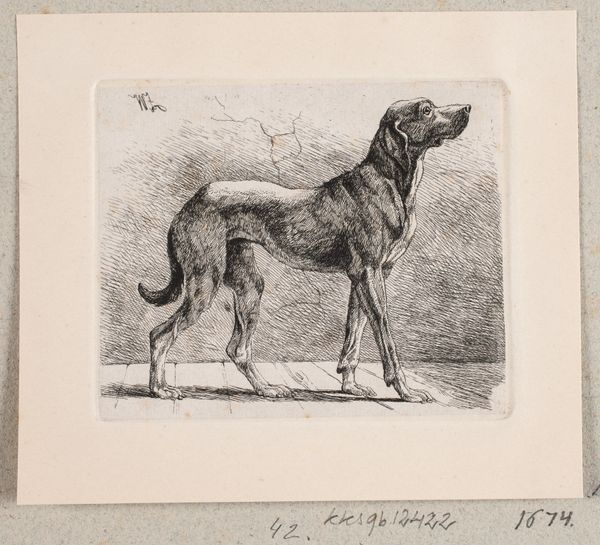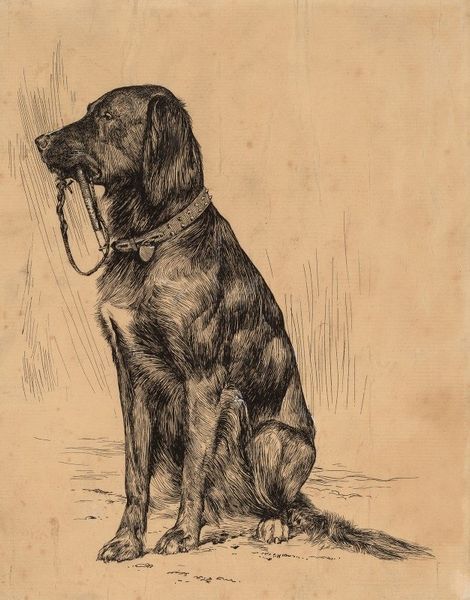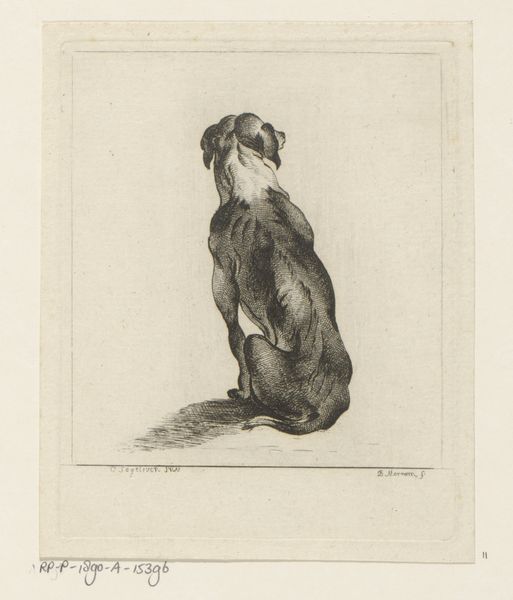
#
pencil drawn
#
amateur sketch
#
light pencil work
#
pencil sketch
#
dog
#
pencil drawing
#
ink drawing experimentation
#
pen-ink sketch
#
sketchbook drawing
#
portrait drawing
#
pencil work
Dimensions: height 108 mm, width 154 mm
Copyright: Rijks Museum: Open Domain
Curator: Look at the palpable mood captured here! It is melancholy I think. Editor: Today we’re observing "Hondenkop met een halsband met ring", which translates to "Dog's Head with a Collar and Ring". Johannes Mock created this work around 1825. The artwork resides here, at the Rijksmuseum. Curator: Yes, melancholy for sure. Do you feel the constraints implied by the ring and collar? The sitter here is less an individual and more a symbol of subjugation, class and gender roles projected onto the animal other. Editor: It's striking how Mock uses only pencil to capture such detail, from the glint in the dog's eye to the texture of its fur. The circular hatching behind the head provides subtle contrast. Semiotically, we read the controlled, deliberate strokes as markers of technical skill. Curator: Technical skill that serves ideological frameworks! The domestic sphere during the early 19th century placed emphasis on obedience and control of bodies deemed “domestic”, be it dogs, or enslaved people and indentured servants, or women. I'm interested in the societal attitudes embedded in representing this animal so restrained. Editor: Interesting to read the artwork through the lens of the "domestic sphere" especially because the composition emphasizes the head alone. Consider how that formal choice encourages intense scrutiny, directing us to read the details as signifiers. The collar could even suggest belonging and care. Curator: Perhaps…but even “care” can manifest itself through controlling practices. This era of emerging industrialization saw rigid systems that placed constraints on marginalized groups and the poor, as they were further surveilled and disciplined to comply with hegemonic norms and values. The way in which we perceive this canine could reflect those power structures and cultural anxieties. Editor: And isn’t that how artworks survive, adapt, and are re-born throughout history: they become cultural prisms, reflecting the tenor of the times and enabling discourse. Curator: I couldn't agree more, particularly as these discussions compel us to reckon with our place in ongoing historical narratives.
Comments
No comments
Be the first to comment and join the conversation on the ultimate creative platform.
